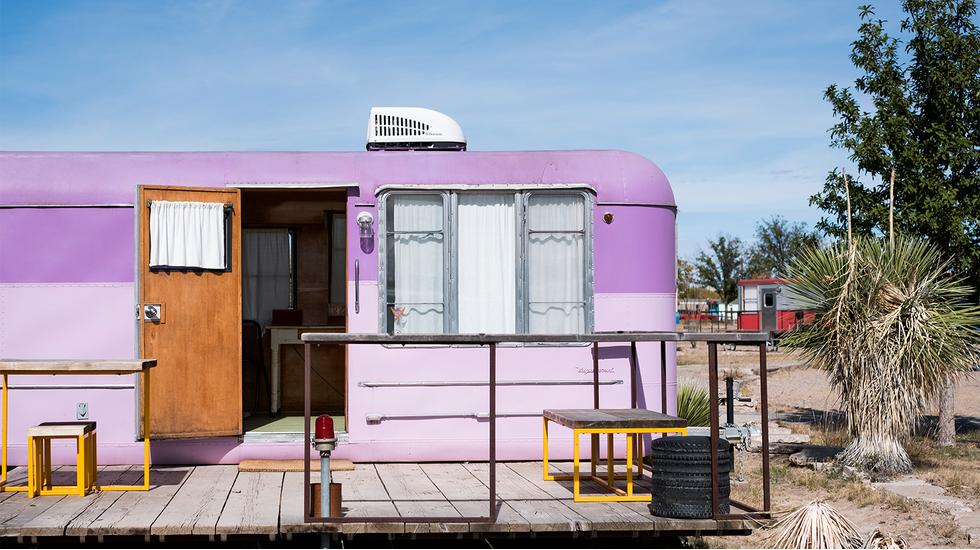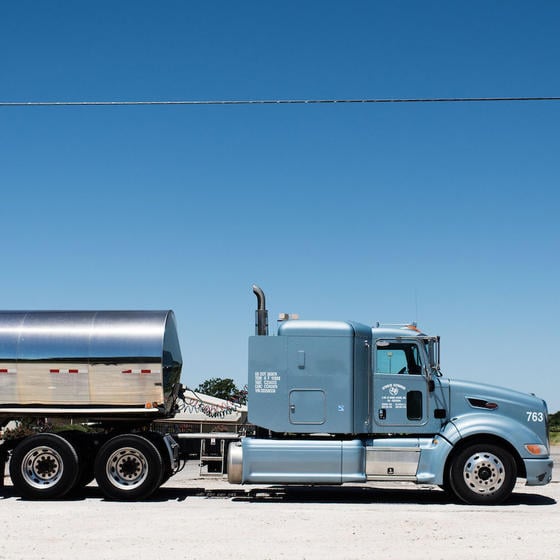Like most people, we had only ever heard vague whisperings of Marfa in films and in song lyrics. Curious to learn more about this mysterious place where iconic bands play to small crowds warmed by firepits and a Prada installation stands watch over the highway, we headed out west to discover it for ourselves.
07 March, 2018

This article appears in Volume
22: The Design Issue
Like
most people, we had only ever heard vague whisperings of
Marfa (“You mean Martha?”) in films and in song lyrics, or
flashing across the odd magazine spread. One of the
Lone Star State‘s most cherished secrets, Marfa remains as
mystical and impenetrable as the desert in which it lies.
Seven hours into our drive from Austin, with mile after mile of
biscuit-coloured land rushing past, it seemed unfathomable that we
were on our way to a town where some of the world’s most legendary
artists have carved out their careers, where iconic bands play to
small crowds warmed by firepits, and the world-famous Prada
installation stands watch over the highway.
Perched a mile above sea level in the Chihuahuan
desert, this unassuming Texan town was transformed into a
bohemian Mecca by the artist Donald Judd when he moved here from
New York in the mid-Seventies. To him, it was the most beautiful
place on Earth.
Judd’s name is still plastered across the town, but his biggest
mark was left in the Chinati Foundation, a contemporary gallery
housed inside an old aeroplane hangar. In the grounds, where
visitors wander freely, rectangular concrete blocks litter the
heathery grass in stark contrast to the wide plains beyond, which
are interrupted only by the smoky Chinati mountains.
It is hard not to feel inspired by Marfa’s gold-flecked backdrop – a landscape that the artist Georgia O’Keeffe dedicated years of her life to capturing.
Arriving just in time for dinner on a Friday evening, we parked
on the town’s main street, Highland Avenue, and nodded to a man in
a Stetson observing us from a bench outside an old barbershop. Down
the road a train shot down the tracks with the organ-like groan
that we would soon come to recognise as the comforting background
music of Marfa.
We stepped from the silent street into the first restaurant that
we saw. Stellina serves an ever-changing menu of Tuscan fare, with
guests huddled around a wooden bar beneath concrete ceilings and
soft lighting. It’s the kind of place that you’d expect to find in
Williamsburg or in Shoreditch, crawling every weekend with a
clientele of creatives. We settled down for one of the best meals
of our trip, chatting to the bartender about what people get up to
on a Friday night. “There’s only one option, really,” he told us.
“The Lost Horse Saloon.”
It’s true that the options are limited in Marfa – that’s part of
its appeal. It is a town of gas stations-turned-art galleries and
empty, dusty cornershops selling crystals and handmade linens.
Locals get their coffee from Tumbleweed Laundry – the only café
that is open daily. They dance at the same saloon, drink at the
same bars and shop from the only grocery store in town.
Sipping their beloved Topo Chico water, they opt for crunchy
flatbreads at the sunny café-garden La Playa, or wolf down
Mediterranean lunch bites from a vintage bus at Food Shark. At El
Cosmico travellers stay in one of a rainbow fleet of reworked
vintage Airstreams, some with open-air rolltop baths. Each year
this legendary campground plays host to the Trans-Pecos Festival of
Music + Love, where artists such as Jenny Lewis and Wilco sing to
the cold night air.
Time melts away deliciously in Marfa, leaving space for art,
creativity and contemplation. Tori Raba, the owner of the Raba
vintage shop, says of the town’s slow pace: “We call it the Marfa
minute. We measure time differently here.”
It is hard not to feel inspired by Marfa’s gold-flecked
backdrop, the endless horizon brushed with strange cloud formations
and sunsets the colour of stewed fruit – a landscape that the
artist Georgia O’Keeffe dedicated years of her life to capturing.
After days of waking up late, visiting galleries and talking to
locals we realised that Marfa’s charisma comes down to its endless
contradictions. It is isolated yet completely open, modern yet
stuck in a bygone era – empty, but intoxicatingly full of life.
